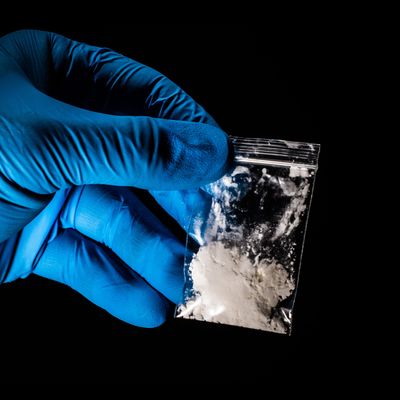
Faced with a declining federal budget for a division charged with countering weapons of mass destruction, the Department of Homeland Security is considering a proposal to extend the label to fentanyl. Task & Purpose reported on Monday that James F. McDonnell, who heads the department’s WMD division, proposed the change in a February memo to then–DHS Secretary Kirstjen Nielsen. The drug’s “high toxicity and increasing availability” made it “attractive to threat actors seeking nonconventional materials for a chemical weapons attack,” McDonnell wrote. There isn’t much of an evidential basis for classifying fentanyl as a WMD, but McDonnell’s suggestions could still find support for reasons that have nothing to do with science and everything to do with politics.
Fentanyl is a powerful synthetic opioid typically prescribed to patients in acute pain. In its illegally produced version, it can be a potent and often deadly drug, especially when mixed with other substances, like heroin. The prevalence of illegal fentanyl does appear to be driving sharp increases in rates of death by opioid overdose. But as the drug proliferates, so too do myths about its real dangers. McDonnell’s memo fits into an overarching narrative that bestows almost magical properties on fentanyl. A 2017 Bloomberg News feature, which set up and tried to examine the possibility that the opioid could be deployed as a WMD, even claimed that fentanyl “is so potent that even a small amount — the equivalent of a few grains of salt — can be lethal.”
This isn’t really true. You can’t get high or become ill simply by touching fentanyl, but police departments often claim otherwise. They report dramatic, but varied, symptoms that don’t mesh with established scientific evidence about fentanyl and the way it’s absorbed by the human body; one officer in East Liverpool, Ohio, even claimed he could feel his body “shutting down” after brief contact with powdered fentanyl. (The same Bloomberg piece that attributes fatal qualities to minuscule amounts of fentanyl uncritically repeats the officer’s story as fact.) However, physicians have suggested that police officers who say they’ve been sickened by mere exposure to the drug are actually displaying signs of mass sociogenic illness — hysteria, in other words. This isn’t exactly proof that fentanyl would make an effective weapon of mass destruction. In fact, it would be difficult to disperse, and other, deadlier chemical agents already exist.
Right-wing political commitments don’t necessarily motivate all urban legends about fentanyl. The opioid crisis is real, and illicit fentanyl is dangerous. But hysteria can also be politically useful, and this particular outbreak is helpful to Trump. He ran, in part, on a promise to restore law and order to a nation in moral decline. In the fever swamps, immigrants bring this deadly substance over the border en masse; it then sickens police officers and kills innocent Americans. To Trump, fentanyl and opioids categorically are a cudgel. As recently as April 4, he threatened to close the U.S. border with Mexico “if the drugs don’t stop.” Kellyanne Conway, who acts both as a spokesperson for the president and as his “opioids czar,” despite having no experience in public health, said in March that people were ingesting marijuana laced with fentanyl. There isn’t much evidence that fentanyl-laced marijuana is a real problem, as BuzzFeed News reported at the time, but police departments continue to spread the claim in comments to the press and on social media.
So why does McDonnell want to classify fentanyl as a WMD? As Task & Purpose points out in its initial report, funding for DHS’s WMD division has experienced a decline commensurate with the Trump administration’s overweening focus on immigration and the border. “It reads like somebody is laying the administrative background for trying to tap into pots of money for detecting WMD and decontaminating WMD,” one expert told Task & Purpose. “It’s an interdepartmental play for money, that’s all it is.” McDonnell’s memo appeals to the president’s basest instincts. If the ploy works, McDonnell won’t just earn more funding for his division. He could also stoke Trump’s anti-immigration agenda, and open the door to a draconian law-enforcement crackdown — all while the administration largely fails to deliver on its promises to address the opioid epidemic.






























